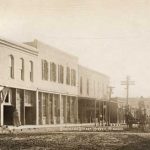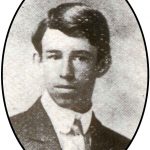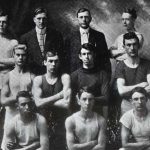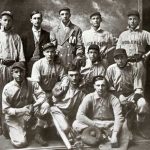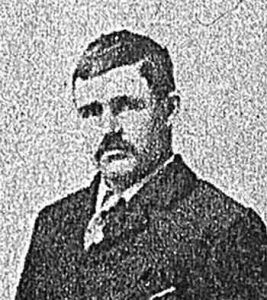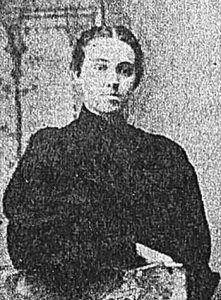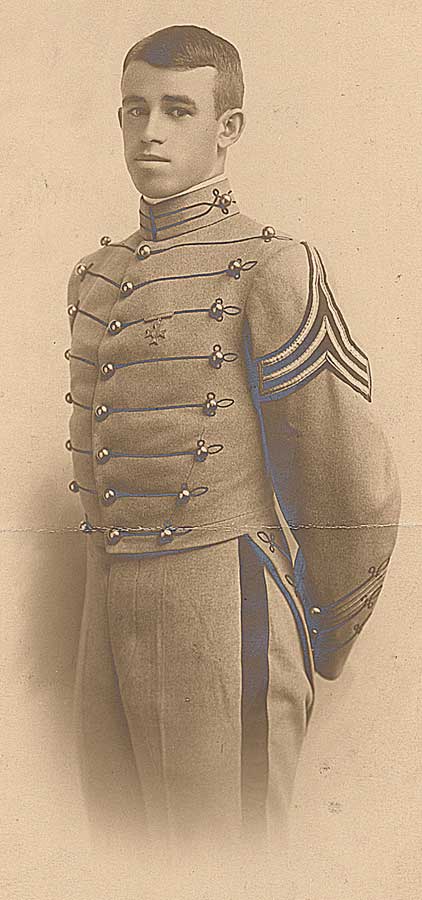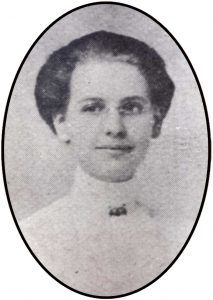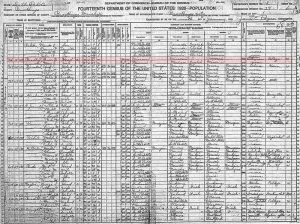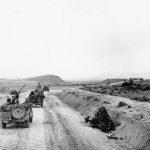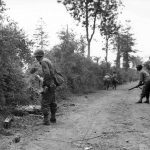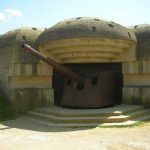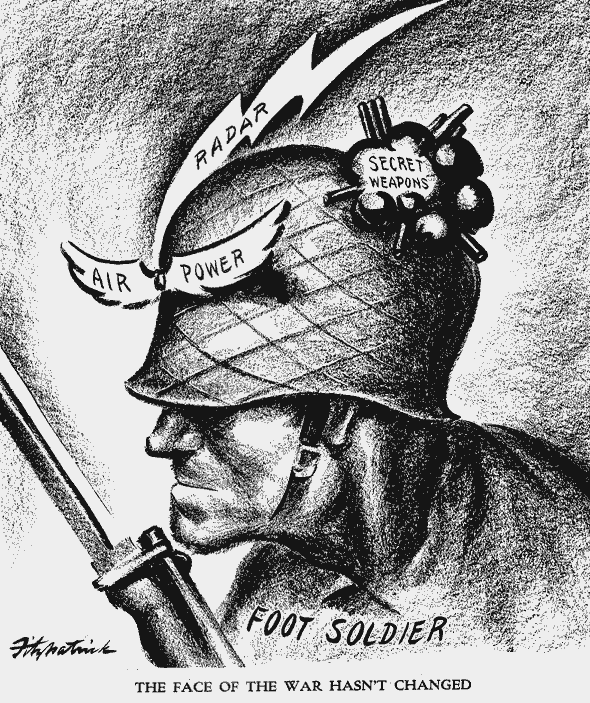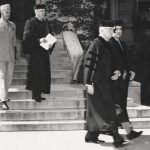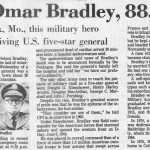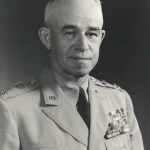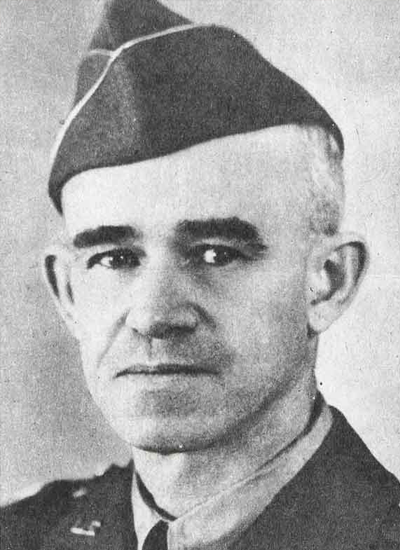
Omar Nelson Bradley

Introduction
Omar Nelson Bradley was one of America’s greatest generals. He commanded the largest American force ever united under one man’s leadership during World War II. Afterwards, General Bradley became the first chairman of the Joint Chiefs of Staff. He served as a five-star general and had the longest military service in U.S. history.
Early Years
Omar Nelson Bradley was born on February 12, 1893, near Clark, Randolph County, Missouri. He was the first child born to John and Sarah Hubbard Bradley. Omar had a younger brother named John who died at the age of two. Omar’s father was a teacher who sometimes walked six miles to work. Omar was just fourteen when his father died of pneumonia. He later said that his father inspired him to be reliable, modest, and responsible.
Shortly after John Bradley’s death, Sarah Bradley moved to Moberly where Omar attended high school. She rented rooms to boarders and became a professional seamstress. Omar worked at odd jobs to help with the bills. At school he was a good student and athlete. During that time, Omar met Mary Quayle, whom he eventually married. They both graduated from Moberly High School in 1910.
Becoming an Army Officer
Following high school, Omar Bradley went to work. His plan was to save enough money to attend the University of Missouri in Columbia. One day John Cruson, the local Sunday school superintendent, suggested that he apply to the United States Military Academy (West Point).
Bradley almost skipped the West Point exam. He worried that he was not ready for the algebra questions since he had not studied the subject for three years. Also, he learned that at least one of the other young men had been studying an entire year for the test. He decided to take the exam only after the Wabash Railroad gave him a free pass to St. Louis.
On the day of the test, Bradley used all the time allowed but still did not answer all the questions. He returned to his job in Moberly convinced that he had not done well. On July 27, 1911, a telegram arrived at Bradley’s home that changed his life. It congratulated him for placing first on the exam. The telegram also informed Bradley that he had just four days to report to the academy on August 1, 1911.
Military life at West Point is demanding. Cadets must take difficult classes and live up to a strict code of conduct. Bradley later stated that his Missouri upbringing prepared him for these challenges. As a student he ranked 44th in a class of 164 and lettered in both football and baseball. Many of his classmates would become important leaders. One of them was Dwight Eisenhower, another outstanding general and a future president.
Many Years of Work
For about twenty-five years, Omar Bradley was a little-known officer in a small peace time army. He and Mary Quayle wed in Columbia, Missouri, in 1916. Like most military families, they moved quite often. Their one child, Elizabeth, was born in 1923. Bradley served in many different ways during those years. During World War I, while other soldiers gained experience in France, Bradley was sent to Montana to guard valuable copper mines.
Afterwards, he taught at colleges and attended army advanced training schools at Fort Benning and Fort Leavenworth. Bradley rose in rank and trained troops. He learned the fundamentals of command and military organization during these noncombat years. With strong leadership and strategic skills in hand, Bradley was prepared to face the great challenges that lay ahead.
World events brought rapid change for Bradley. In 1940 the government feared that the United States Army would be drawn into war. At that time the army had only about 175,000 soldiers. The Axis Powers (Germany, Italy, and Japan) had millions of soldiers. The government ordered the army to expand quickly. Army Chief of Staff George Marshall needed leaders who could organize large numbers of men and develop them into soldiers. One of the men he turned to was Omar Bradley. Bradley was appointed to command the infantry school at Fort Benning, Georgia, in 1941. Before being called overseas, he directed the training of thousands of men and officers. Bradley’s school was so successful that it was copied throughout the army.
World War II
The first major campaign in which the U.S. Army fought was in North Africa in early 1943. The inexperienced American II Corps was defeated at the Kasserine Pass by the Germans. Many were worried. General Eisenhower, the American commander, sent for Omar Bradley. “Brad,” as he was known in the army, was ordered to study the situation and make changes. When the II Corps next went into battle, it drove the Germans back and captured 40,000 soldiers. General Bradley then served in the successful invasion of Sicily. The army was learning to fight well, and Bradley was one of the main reasons for it.
After Sicily, Bradley was appointed to one of the most important jobs of the war. He would be the field commander of American soldiers on June 6, 1944, also known as “D-Day.” The successful attack allowed the Allies to move directly against the German army in France. Within a year, Bradley’s forces were the first to invade Germany and were in control of much of that country when the war ended in May 1945.
Postwar Service
As World War II ended, President Harry S. Truman asked General Bradley to lead the Veterans Administration. The VA was set up to provide help to the millions of veterans who had fought in the war. Bradley’s leadership skill and his reputation as the “Soldier’s General” made him an excellent choice. He served the VA until he was asked to take over another big job in 1948, the chief of staff. That is when he became the highest-ranking soldier in the army. The next year he became the first ever Chairman of the Joint Chiefs of Staff. In 1950, Congress appointed him General of the Army with five stars. In all of U.S. history only two soldiers, George Washington and John J. Pershing, have held higher rank.
At the age of sixty in 1953, Bradley retired. For about fifteen years, he was the chairman of the Bulova Watch Company. In 1965, Mary, his wife of almost fifty years, died of leukemia. He married Esther “Kitty” Buhler on September 12, 1966. Over the next several years, Bradley helped with the major film, Patton, and worked on an autobiography published after his death. Omar Bradley died of heart failure on April 8, 1981. He was buried with honors at Arlington National Cemetery.
Legacy
Because of his keen abilities to organize and lead, Omar Bradley became one of the most accomplished generals in the history of the United States Army. He defeated powerful enemy armies and earned a reputation for paying exceptional attention to the care of soldiers serving under him. He received widespread praise and was highly decorated during his lifetime. He remains a respected military figure today.
Text and research by Henry D. Landry
References and Resources
For more information about Omar Nelson Bradley’s life and career, see the following resources:
Society Resources
The following is a selected list of books, articles, and manuscripts about Omar Nelson Bradley in the research centers of The State Historical Society of Missouri. The Society’s call numbers follow the citations in brackets.
Articles from the Missouri Historical Review
- Flynn, Dorothy Dysart. “Missouri and the War, Part VII.” v. 38, no. 3 (April 1944), pp. 305-324.
- Flynn, Dorothy Dysart. “Missouri and the War, Part IX.” v. 39, no. 1 (October 1944), pp. 53-74.
- Flynn, Dorothy Dysart. “Missouri and the War, Part XIII.” v. 40, no. 1 (October 1945), pp. 61-89.
- Flynn, Dorothy Dysart. “Missouri and the War, Part XIV.” v. 40, no. 1 (January 1946), pp. 215-244.
- “In Memoriam.” v. 75, no. 4 (July 1981), p. 497.
Articles from the Newspaper Collection
- “Bradley Homecoming Stirs Recollection of General’s Early Years in Moberly.” Kansas City Times. June 8, 1945. [Reel # 24093]
- “Omar Bradley: Evolution of a Missouri General.” St. Louis Post-Dispatch. January 30, 1944. p. 3. [Reel # 42687]
- “A Peerless Military Leader, General Omar Bradley is Dead.” Columbia Daily Tribune. April 29, 1981. p. 1. [Reel # 8449]
- “In Memory of General Omar Bradley Who Would Have Been 100 Years Old Today.” Moberly Monitor-Index & Evening Democrat. February 12, 1993. p. 4. [Reel # 30372]
- “Post to Bradley.” Kansas City Times. June 8, 1945. p. 1. [Reel # 24093]
Books
- Bondi, Victor. American Decades, 1940-1949. Detroit: Gale Research, 1995. pp. 132, 216, 277, 389. [REF 973.9 G131]
- Boswell, Helen Alderson. Genealogical History of General Omar Nelson Bradley. Moberly, MO, 1982. [REF F508.2 B728b]
- Bradley, Omar N. A Soldier’s Story. New York: Henry Holt, 1951. [REF 940.542 B728]
- Bradley, Omar N., and Clay Blair. A General’s Life: An Autobiography. New York: Simon and Schuster, 1983. [REF F508.1 B728b]
- Chambers, John Whiteclay II, ed. The Oxford Companion to American Military History. New York: Oxford University Press, 1999. pp. 90, 94, 203, 207-280, 505, 506, 529, 754. [REF 355.0973 Ox2]
- Christensen, Lawrence O., William E. Foley, Gary R. Kremer, and Kenneth H. Winn, eds. Dictionary of Missouri Biography. Columbia: University of Missouri Press, 1999. pp. 111-113. [REF F508 D561]
- Garraty, John A., and Mark C. Carnes, eds. American National Biography. New York: Oxford University Press, 1999. pp. 378-382. [REF 920 Am37]
- Muench, James F. Five Stars: Missouri’s Most Famous Generals. Columbia: University of Missouri Press, 2006. pp. 104-139. [REF F508 M888]
- Reeder, Russell Potter. Omar Nelson Bradley: The Soldier’s General. Champaign, IL: Garrard Publishing, 1969. [REF IJ R2560]
- Whiting, Charles. Bradley. New York: Ballantine Books, 1971. [REF F508.1 B728]
Manuscript Collection
- Kem, James Preston (1890-1965), Papers, 1946-1952 (C2700)
This collection contains the papers from Kem’s term as a Republican U.S. senator from Missouri. The bulk of the material is constituent correspondence. Information on Omar Bradley can be found in the following folders: 2647, 2691, 2701, 2704, 2709, 2727, 3523, 3746, 11581, 11645, 11646, 11648, 11656, and 11937. - Rusk, Howard A. (1901-1989), Papers, 1937-1991 (C3981)
The papers of Dr. Howard A. Rusk, considered to be the father of rehabilitation medicine, contain Rusk’s correspondence and writings, publicity and clippings, photographs, speeches, awards, and other materials concerning his groundbreaking work with the injured and disabled. Omar Bradley is indexed in the following folders: 6, 68, 156, 249, 346, 396, and 607.
Outside Resources
These links, which open in another window, will take you outside the Society’s website. The Society is not responsible for the content of the following websites:
- Arlington National Cemetery
This link takes you to the Omar Bradley page at the Arlington National Cemetery site. It contains a good biography and interesting photos. - U.S. Army Center of Military History
This website was created to mark the one-hundredth anniversary of Bradley’s birth and includes a lot of information.




